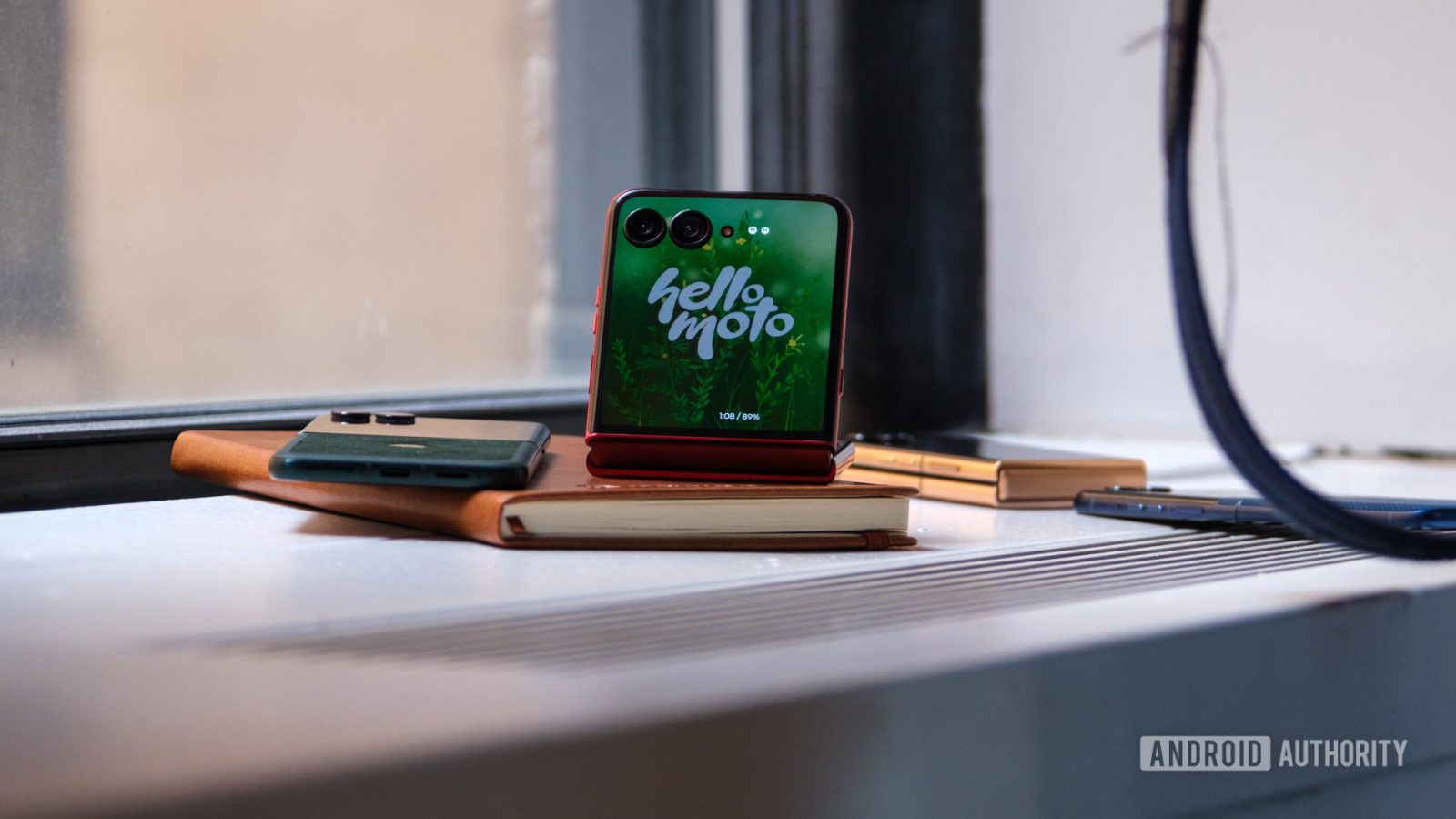I spent at least two or three years begging Motorola to bring a telephoto sensor to its revamped Razr series. I felt like I spent long enough complaining about the zoom capabilities (or lack thereof) on flip phones that a dedicated sensor was the only way forward. Then, Motorola listened. It loaded the Razr Plus (2024) with a 2x optical sensor for Super Zoom up to 30x. For a second, I had everything I wanted. Then, I realized that the grass wasn’t greener.
Although the image quality from the telephoto sensor was fine, I wasn’t using it nearly enough to justify its presence over an ultrawide camera. After all, a capable primary sensor can handle zoom well enough for most use cases, and the Razr Plus already had that. So, now that the brand-new Razr Ultra is returning to the tried and true wide and ultrawide pairing, I know that it’s the right call — here’s why.
It’s easier to zoom in than to zoom out
Ryan Haines / Android Authority
One thing I’ve learned from reviewing dozens of smartphones year after year is that I’m a creature of habit. As much as I might love it when a phone launches with incredible zoom capacity — even up to the 100x Space Zoom of the Galaxy S25 Ultra — I probably won’t use it very often. Yes, it’s nice to have the option, but the sweet spot for image quality is still somewhere between 1x zoom and 10x zoom, and that’s where I’ll spend 95% of my time reviewing a phone.
But when Motorola added an optical 2x telephoto sensor to its Razr Plus (2024), I thought it gave me everything I wanted in a camera phone. I thought I would set off into the streets of Brooklyn during the launch event and then bounce around Baltimore once I returned home, capturing nicely zoomed images like I hadn’t been able to do before. In a few situations, I was right — the zoom was pretty decent for big things like buildings.
I thought I wanted a telephoto sensor on the Razr Plus right up until the moment I got one.
However, when I wanted the finer details of a pitching duel at home plate in Camden Yards, I felt like even the 30x Super Zoom left something to be desired. The Razr Plus’s zoom lens took on all of the character and sharpness of an oil painting as soon as I hit 20x zoom, and I think I’ve only ever shared one image taken at that length because I had to include one for my review. I’ve taken more than that one photo, including one or two of Paris Hilton at Motorola’s launch event, but the quality never felt good enough to post.
On top of that, I longed for the ultrawide sensor’s flexibility much faster than I expected. While a good primary sensor can usually punch in for some decent — or at least passable — zoom, there’s no way to fit more into your shot. Despite being surrounded by beautiful murals and hand-painted advertisements in the streets of Brooklyn, I couldn’t capture them in a single shot because I couldn’t move my feet far enough back.
Motorola had given me my cake, and now I was being a brat at my own birthday party because I refused to eat it.
The Razr Ultra has a few more tricks up its sleeve
Ryan Haines / Android Authority
Fast forward a year, and it’s time for the next generation of Motorola Razr devices. Based on the leaks leading up to the event, I wasn’t expecting much. I figured the new pair of Razrs would look and feel like their predecessors — and I was right. On paper, the Razr (2025) and Razr Plus (2025) are almost identical to the flip phones that came before. However, Motorola had one more surprise for us: The Razr Ultra.
Everything about the Razr Ultra is, well, Ultra. It packs the most powerful chipset in Qualcomm’s Snapdragon 8 Elite, the biggest battery on a flip phone at 4,700mAh, and the fastest charging with 68W wired speeds. It’s even the first flip phone to ship with Corning’s Gorilla Glass Ceramic protecting its 4-inch cover screen. But, to me, Motorola’s most exciting change was to reverse course on its Razr Plus cameras and return to a pairing that’s worked for years.
Moto AI might be the camera trick that the Razr series has needed all along.
Only, Motorola wasn’t going back to exactly the same duo it had used previously. Instead, it found a pretty sweet middle ground by combining Sony’s stacked LYTIA 700c sensor capable of up to 30x Super Zoom with a 50MP ultrawide sensor with a 122-degree Field of View. So, if all goes to plan, the new primary sensor should be more than capable of covering my beloved 1x to 10x zoom range, while the high-resolution ultrawide sensor covers the situations when I need just a little bit more in my shot.
And, with Motorola finally embracing AI with open arms, the Razr Ultra’s duo should feel even more capable than before. It’s set to gain new shooting modes like Group Shot, Action Shot, and Signature Style, which learns to tweak the color and tone of your shots over time to match your taste. I’m also hoping that Motorola’s use of AI extends to image processing, which might — just might — get me to trust a primary camera up to 30x zoom.
If all goes well, maybe I’ll even start pitching the idea of pairing an ultrawide camera with a telephoto sensor to skip 1x zoom altogether.

Leave a Reply